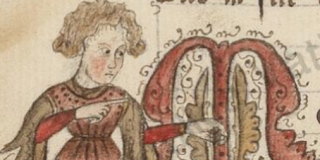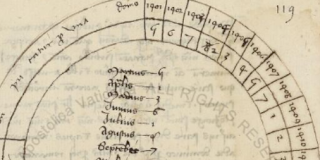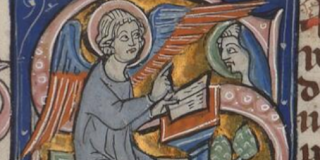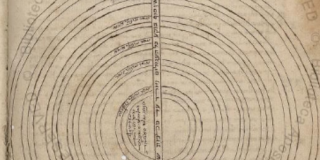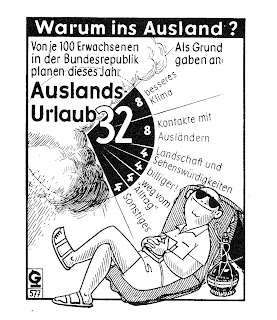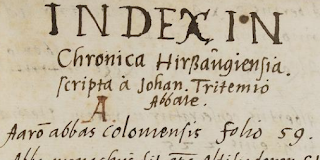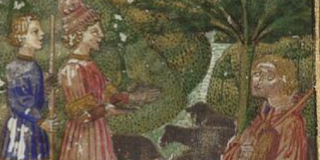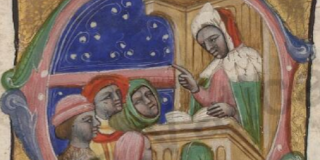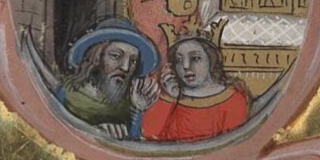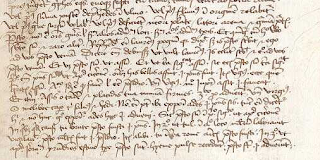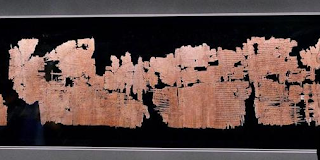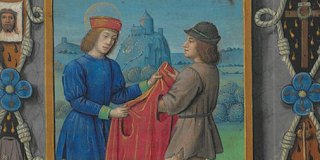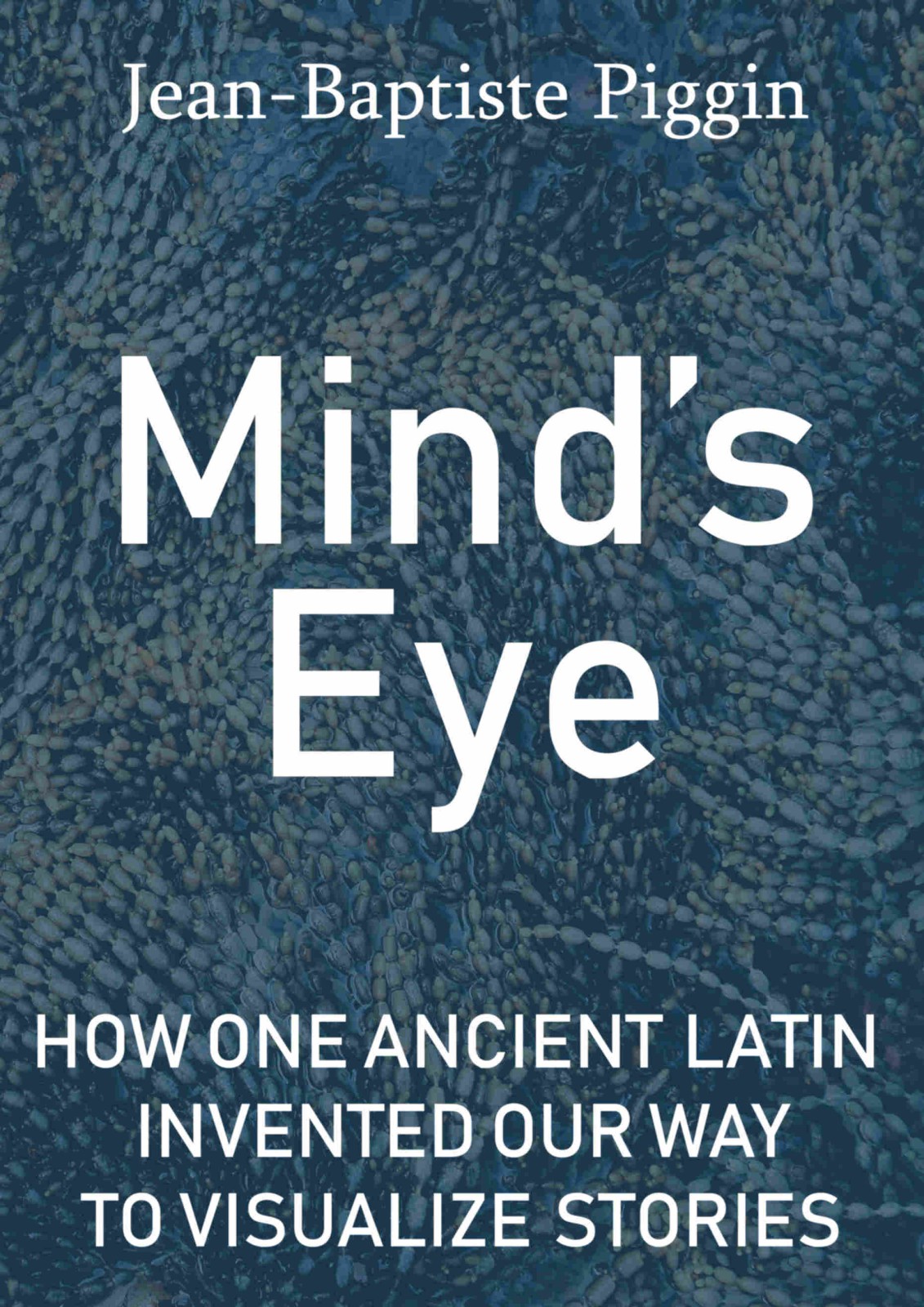The Vatican Library has just digitized an Epistulae of Ovid drawn ca. 1430-1440, possibly in northern Italy, which depicts in its margins ten pairs of lovers framing the start of each letter (see article by Rabel).
Leaf through Ross.893 to see them. Here for example is Leander of Abydos clutching the M of "Mittit Abydenus ..." like a shield as he writes in Heroides Letter 18 of his desire to swim long distance to see his girlfriend:
You can also admire him wearing a most extraordinary Italian Renaissance high hat as letter 19 arrives by return of post from lovely Hero:
Here is the full list of 32 digitizations uploaded on July 5, 2016:
- Borg.copt.109.cass.IX.fasc.29 - Details
- Borg.copt.109.cass.XIX.fasc.71 - Details
- Borg.copt.109.cass.XIX.fasc.74 - Details
- Borg.copt.109.cass.XVII.fasc.62 - Details
- Borg.copt.109.cass.XVII.fasc.63 - biblical fragments including a page of Luke's Gospel - Details
- Borg.copt.109.cass.XVIII.fasc.65.1 - Details
- Borg.copt.109.cass.XVIII.fasc.66 - Details
- Borg.copt.109.cass.XVIII.fasc.67 - Details
- Borg.copt.109.cass.XVIII.fasc.68 - Details
- Chig.H.VII.229 - Horace - Details
- Ott.lat.3382 -historical? Armenia and Persia - Details
- Ross.893 - Ovid, Epistulae (above) - Details
- Urb.lat.679 - Rambaldi's commentary on Dante's Divine Comedy Details
- Vat.lat.101 - glossed bible, later books Details
- Vat.lat.293 - Ambrose, Details
- Vat.lat.309 - John of Damascus, attrib. Details
- Vat.lat.310 - John of Damascus, Chrysostom, Anselm - Details
- Vat.lat.331 - Jerome on prophets, Details
- Vat.lat.351 - Collection of Epistulae, Details
- Vat.lat.652 - Johannes Scotus Eriugena and his famed exposition on the heavenly hierarchy, from which derives our modern use of "hierarchy" as a key abstraction - Details
- Vat.lat.669 - Bernard of Clairvaux, Details
- Vat.lat.687 - Augustine plus bits and bobs including this nifty circular calendar for 1401 onwards,
- Vat.lat.690 - Peter Lombard, Sententiae Details
- Vat.lat.699 - Psalms commentary attributed to Innocent III - Details
- Vat.lat.708 - Albertus Magnus, bishop Regensburg, Summae theologiae, Details
- Vat.lat.753 - Details
- Vat.lat.794 - 14th century copy of Thomas Aquinas commentary on gospels. It seems from notes in it that Bermond de Montferrier, a Montpellier law professor was involved in transferring the codex to a convent in that city. With fine initial (below) showing the angelic doctor - Details
- Vat.lat.812 - Franciscan sermons Details
- Vat.lat.828 - works of Aegidius Romanus Details
- Vat.lat.856 - Henry of Ghent, 15th century, first exemplar? Details
- Vat.lat.12504 - letters of Enea Silvio Piccolomini, humanist, diplomat and pope, Details
- Vat.lat.14741 - Giorgio Grippari's 1694 handwritten list of the printed books in the Biblioteca Vaticana. This is only initial letters A-B. Details
